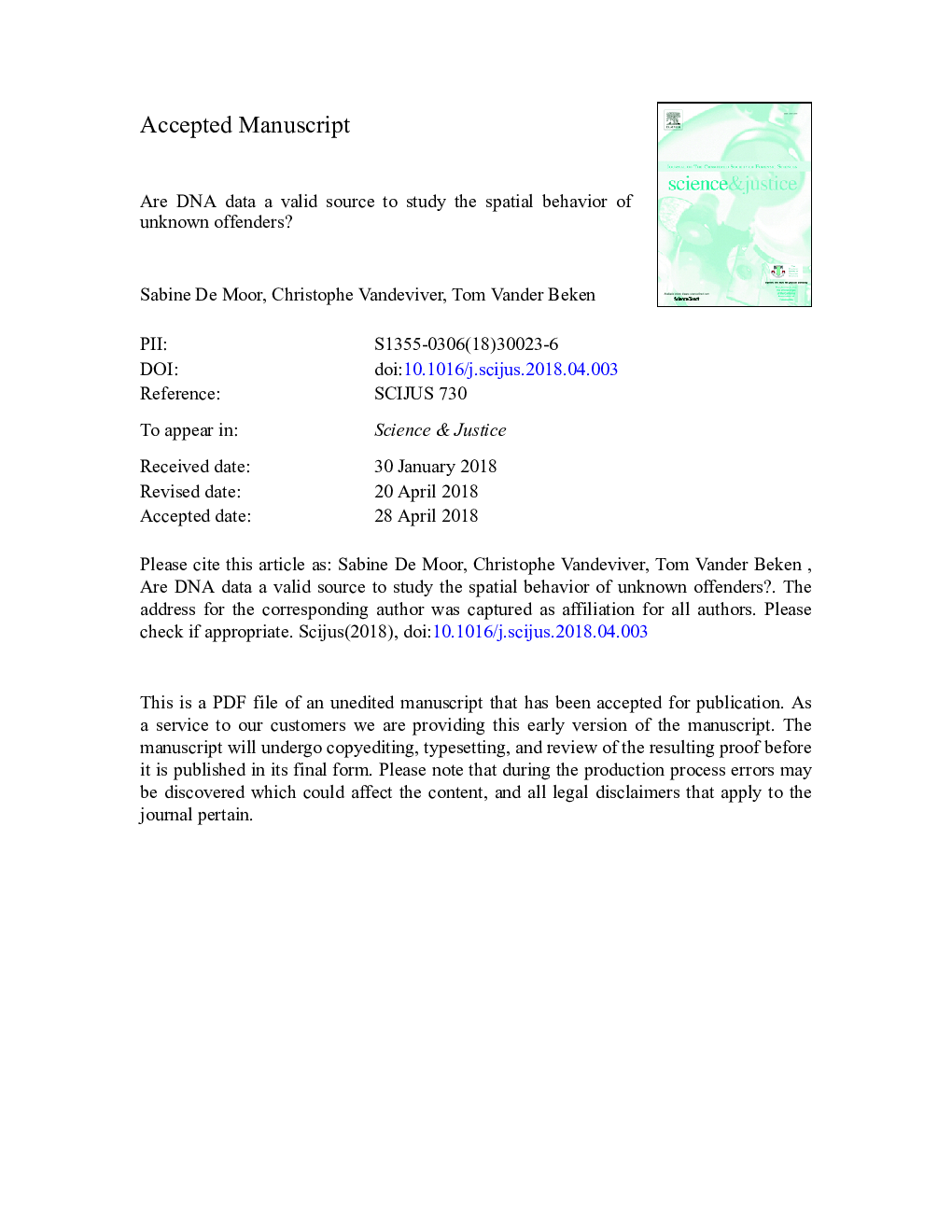| Article ID | Journal | Published Year | Pages | File Type |
|---|---|---|---|---|
| 8959795 | Science & Justice | 2018 | 26 Pages |
Abstract
Studying the spatial behaviour of unknown offenders (i.e. undetected offenders) is difficult, because police recorded crime data do not contain information about these offenders. Recently, forensic DNA data has been used to study unknown offenders. However, DNA data are only a subset of the crimes committed by unknown offenders stored in police recorded crime data. To establish the suitability of DNA data for studying the spatial offending behaviour of unknown offenders, we examine the concentration and spatial similarity of detected but unsolved crimes in police recorded crime data (Nâ¯=â¯181,483) and DNA data (Nâ¯=â¯1913) over 27 Belgian judicial districts for four crime types. We established spatial similarity for certain crime types (in some districts). This offers opportunities for DNA data to be used to study unknown offenders' spatial offending behaviour. Implications for theory and research are discussed.
Related Topics
Physical Sciences and Engineering
Chemistry
Analytical Chemistry
Authors
Sabine De Moor, Christophe Vandeviver, Tom Vander Beken,
